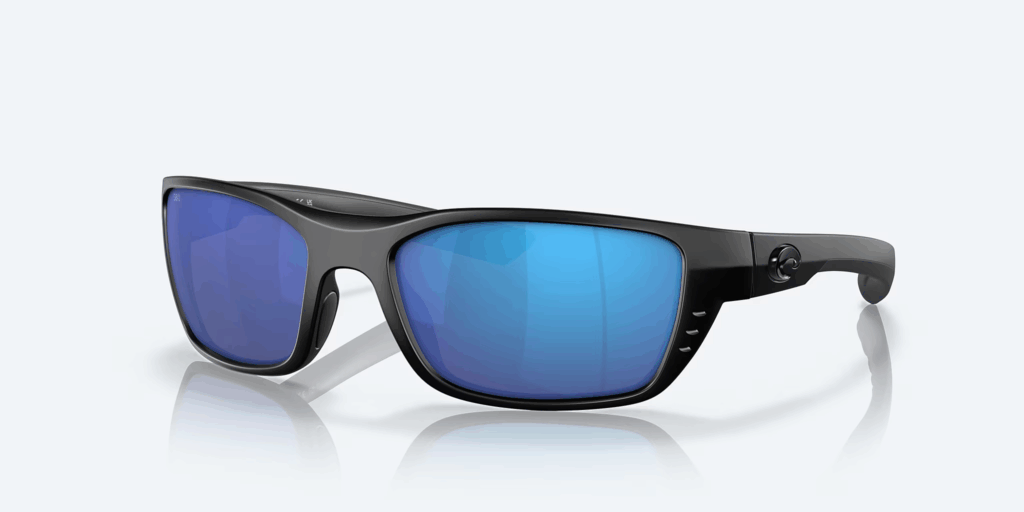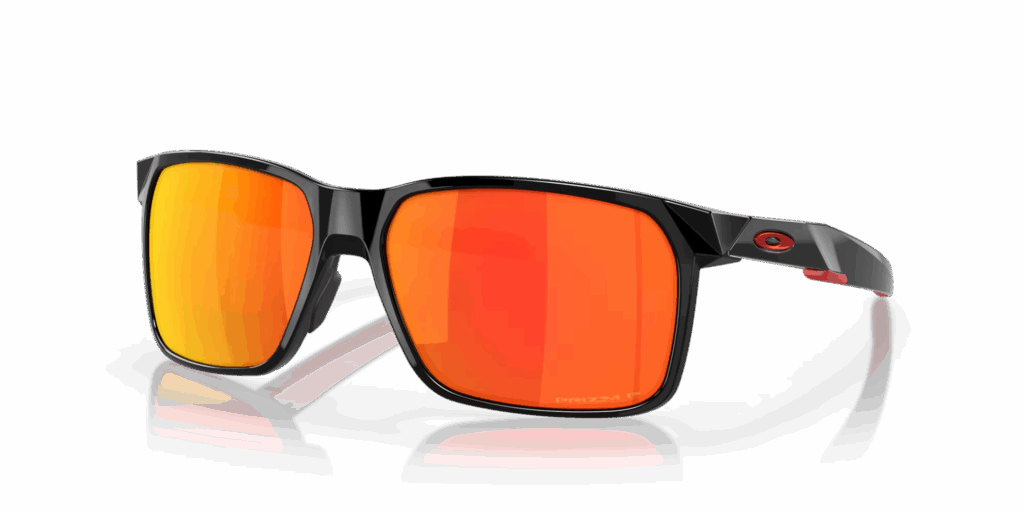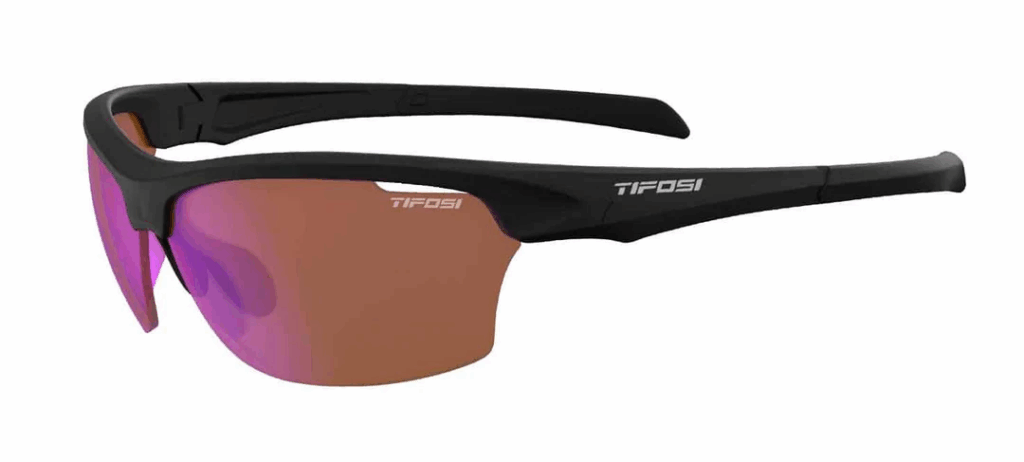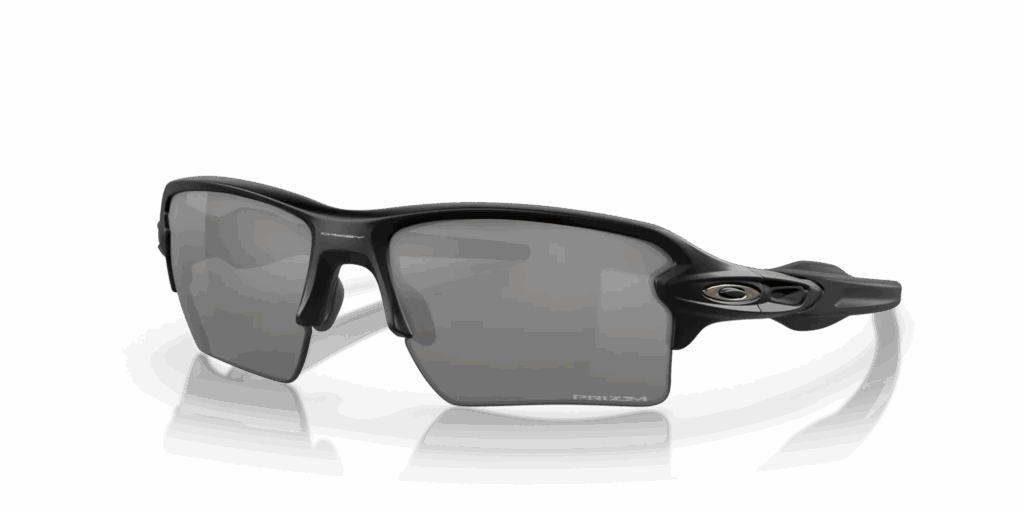
Key Takeaways
- Specialized golf sunglasses are an often-overlooked secret weapon for improving your game.
- They provide crucial benefits like superior visual clarity, enhanced comfort, and vital UV protection.
- Understanding key features such as lens technology (tints, VLT, coatings), fit, and UV blocking is essential for optimal selection.
- Top brands like Oakley (with Prizm technology) and Costa Del Mar offer advanced solutions for different playing conditions.
- Proper care and storage significantly extend the lifespan and effectiveness of your golf eyewear.
Table of Contents
- Best Golf Sunglasses 2025: See Every Shot, Read Every Green
- Key Takeaways
- Why Are Specialized Golf Sunglasses Essential for Your Game?
- Key Features to Look For in Golf Sunglasses (The Ultimate Buying Guide)
- Best Golf Sunglasses 2025: Top Picks & Reviews
- Overall Best Golf Sunglasses 2025: Costa Del Mar Whitetip
- Best Golf Sunglasses for Reading Greens: Oakley Portal X with Prizm Dark Golf Lenses
- Best Golf Sunglasses for Low Light Conditions: Tifosi Intense Sport (Custom High VLT Lenses)
- Best Oakley Golf Sunglasses: Oakley Radar EV Path / Flak 2.0 XL
- Best Value Golf Sunglasses: Tifosi Swank
- Best Premium/Performance Golf Sunglasses: High-End Oakley Models
- Deep Dive: Oakley Golf Sunglasses and Prizm Technology
- Caring for Your Golf Sunglasses
- Conclusion
- Frequently Asked Questions (FAQs)
For many golfers, specialized sunglasses are an often-overlooked secret weapon on the course. While a good set of clubs and the right ball are clear essentials, the right golf eyewear can profoundly impact your game. Best golf sunglasses 2025 provide crucial benefits: superior visual clarity, enhanced comfort, and vital eye protection against harsh sun glare and damaging UV rays during those long hours spent outdoors. This comprehensive guide will help you navigate the features and technologies available, ensuring you find the best golf sunglasses for your specific needs, elevating both your performance and enjoyment of the sport.
Why Are Specialized Golf Sunglasses Essential for Your Game?
Wearing specialized golf sunglasses goes beyond just looking good on the green. They offer distinct advantages that directly translate to improved play and long-term eye health. From boosting your ability to read putting lines to protecting your eyes from sun damage, these tools are far from a simple accessory.
How Do Golf Sunglasses Enhance Visual Clarity and Contrast?
Specialized golf sunglasses feature lens tints specifically engineered to boost contrast and depth perception. Colors like rose, amber, or brown are popular choices because they filter light in a way that makes the greens, fairways, and even the golf ball itself stand out more clearly. This enhanced visual information is critical for every shot. For instance, when you’re on the putting green, these lenses help you read subtle breaks and slopes on greens, which is key for accurate putting. Without this added contrast, minor undulations can be invisible, leading to missed putts. Furthermore, being able to distinguish the texture of the fairway or the rough helps with approach shots and even finding your ball quickly after a drive (source).
How Do Golf Sunglasses Reduce Glare and Eye Strain?
The golf course is full of reflective surfaces: water hazards, bright sand traps, slick fairways, and even the glare off your own clubhead. Quality lenses designed for golf incorporate features like polarization and specialized coatings that effectively block harsh horizontal glare. This glare can be highly distracting and cause significant eye fatigue over a full 18-hole round. By cutting down on this blinding light, golf sunglasses allow your eyes to relax, reducing strain and discomfort. This means you can stay focused on your swing and the target without constantly squinting or feeling tired eyes by the back nine.
Why Is Critical UV Protection Important for Golfers?
Spending hours under the sun exposes your eyes to harmful ultraviolet (UVA/UVB) rays, which can lead to serious long-term damage. Just like your skin, your eyes need protection. Quality golf sunglasses come with 100% UVA/UVB protection, acting as a shield against conditions like cataracts, macular degeneration, and photo-aging around the delicate eye area. For golfers who regularly spend four hours or more on the course, this protection is not just a luxury—it’s a health imperative. Safeguarding your vision now ensures you can enjoy the sport for years to come without worrying about sun-induced eye issues (source).
How Do Golf Sunglasses Improve Focus and Comfort?
Distractions on the golf course can easily derail a good round. Ill-fitting or uncomfortable sunglasses are a common source of such distractions. Lightweight frames combined with secure fit systems, such as rubberized nose pads and temple grips, keep your eyewear firmly in place, even during a powerful swing or when you’re sweating under the summer sun. This stability means you won’t be constantly pushing your glasses back into place or feeling them slip, allowing you to maintain full concentration on your shot. When your golf sunglasses fit well and feel comfortable, they become an invisible part of your gear, letting you focus entirely on your game.
Key Features to Look For in Golf Sunglasses (The Ultimate Buying Guide)
Choosing the best golf sunglasses involves understanding several key features. These elements work together to provide optimal vision, comfort, and protection, making a significant difference in your golf experience.
Lens Technology & Color: What Should You Look For?
The lens is the heart of any golf sunglass. Its technology and color play the biggest role in how you see the course.
What is Visible Light Transmission (VLT) and Why Does it Matter?
Visible Light Transmission (VLT) indicates the percentage of visible light that passes through the lens. A lower VLT means the lens is darker and lets less light in, making it suitable for very bright conditions. Conversely, a higher VLT means the lens is lighter and allows more light to pass through, ideal for overcast or low-light situations.
For golf, the optimal VLT depends on the typical lighting conditions you play in. Golf lenses typically have a VLT between 15-30% for sunny days, offering enough darkness to reduce glare without obscuring details. However, for overcast days or early morning/late afternoon rounds where light is scarce, lenses with a higher VLT (around 45-60%) are preferred. These lighter lenses allow more light to reach your eyes, enhancing visibility and contrast when the sun isn’t shining brightly. Choosing the right VLT ensures your vision is optimized for the specific conditions of your round. This also makes them ideal golf sunglasses for low light.
What Are the Ideal Lens Tints for Golf?
Different lens tints are designed to filter light in specific ways, enhancing certain colors and contrasts on the golf course. Choosing the right tint can significantly impact your ability to read greens and track the ball.
- Rose/Pink: These tints are excellent for enhancing contrast and terrain definition. They are especially effective in variable light conditions, making it easier to spot the subtle contours of the green and track the ball against the sky.
- Amber/Brown: Versatile and popular, amber and brown lenses improve depth perception and warm colors, making the course appear more vibrant. They perform well in a wide range of lighting conditions, from bright sun to moderate overcast skies.
- Grey: Ideal for very bright, sunny days, grey lenses reduce overall brightness without distorting true colors. They offer a neutral view, which many golfers prefer for maintaining natural color perception.
- Green: Green tints offer a good balance, maintaining true color balance while effectively improving contrast and reducing glare. They can make the greens appear sharper and more vivid.
What Lens Coatings Are Important for Golf Sunglasses?
Lens coatings add extra layers of functionality and protection to your golf sunglasses.
- Anti-scratch coatings protect the lenses from everyday wear and tear, ensuring long-lasting clarity. Given the dynamic nature of golf, with clubs, bags, and carts, lenses can easily get scratched without this protection.
- Anti-fog coatings are crucial for golfers who play in humid conditions or experience significant temperature changes, preventing condensation from clouding your vision. This ensures uninterrupted focus, especially after walking between holes or during intense moments.
- Hydrophobic coatings repel water, sweat, and oils, allowing droplets to bead up and roll off the lens easily. This feature keeps your vision clear even when you’re sweating profusely or playing in light rain, preventing streaks and smudges that can impair visibility.
Polarized vs. Non-Polarized Sunglasses for Golf: Which Is Better?
The debate between polarized vs non-polarized sunglasses for golf is significant, as each type offers distinct advantages and disadvantages. Your choice often comes down to personal preference and specific course conditions.
- Polarized Lenses: These lenses are designed to reduce horizontal glare, which is light reflected off flat surfaces like water, wet grass, or shiny fairways. For golfers, this means significantly less squinting when dealing with water hazards or bright, reflective patches on the course, leading to improved visual comfort. This can make tracking the ball against a bright sky or over water much easier. However, the downside is that polarized lenses can sometimes make it harder to read digital screens, such as those on GPS devices, rangefinders, or even your smartphone, because of how they filter light. This can be a notable inconvenience for golfers who rely heavily on these gadgets during their rounds.
- Non-Polarized Lenses: These lenses offer consistent color and vision clarity without the specific glare-reducing properties of polarized lenses. Their primary advantage for golfers is that they do not interfere with digital displays, ensuring that your rangefinder or golf watch remains perfectly legible. For golfers who play in varied lighting conditions, including overcast days, or those who depend on their smart devices for yardage and scoring, non-polarized lenses often provide a more seamless visual experience. While they don’t block glare as aggressively, modern non-polarized lenses can still offer excellent clarity and UV protection with the right tints and coatings.
- Choosing Your Type: The best choice depends on your typical playing conditions and how you use technology on the course. If you mostly play on bright, sunny days and your course has many water hazards, polarized lenses might be ideal for glare reduction and comfort. However, if you often play in cloudy or lower light conditions, or if you rely heavily on digital rangefinders and GPS devices, non-polarized lenses might be a better fit to maintain clear screen visibility. Some golfers even carry both types to switch based on the day’s conditions.
What Makes a Good Fit and How Does it Enhance Comfort?
The fit of your golf sunglasses is just as important as the lens technology. A poor fit can lead to distractions, discomfort, and even compromise your safety on the course.
- Lightweight, Durable Materials: Frames made from advanced, lightweight materials such as O-Matter or Grilamid provide long-lasting comfort without feeling heavy on your face. These materials are also designed to be durable, resisting impacts and flexing without breaking, which is crucial for active sports like golf where sunglasses might endure accidental drops or bumps.
- Secure Fit Systems: Features like rubberized nose pads and temple grips are vital. These specialized components increase grip when wet, preventing the sunglasses from slipping down your nose or bouncing around during your swing, even when you’re sweating profusely. A secure fit allows you to execute powerful swings and move freely without worrying about your eyewear.
- Wrap-around Styles: Many top golf sunglasses feature wrap-around designs. These styles extend the lens coverage around the sides of your face, offering superior peripheral vision. This is critical for seeing the entire course layout and tracking your ball from impact to landing. Additionally, wrap-around frames provide excellent side glare protection, preventing distracting light from entering your eyes from the periphery, which can be common on wide-open golf courses.
What Level of UV Protection Should My Golf Sunglasses Have?
When it comes to eye protection, there’s one non-negotiable feature: 100% UVA/UVB blocking. This means the lenses block virtually all harmful ultraviolet rays from the sun. UVA and UVB rays can cause significant damage to your eyes over time, including increasing the risk of cataracts, macular degeneration, and other serious conditions. All reputable golf sunglasses brands will clearly specify that their lenses offer full UVA/UVB protection. Never compromise on this feature, as it’s fundamental to safeguarding your long-term eye health during countless hours spent under the sun.
Best Golf Sunglasses 2025: Top Picks & Reviews
Finding the best golf sunglasses 2025 means selecting a pair that combines cutting-edge lens technology with a comfortable, secure fit. Here are some of the top picks currently available, catering to different needs and preferences, offering the best golf sunglasses on the market.
Overall Best Golf Sunglasses 2025: Costa Del Mar Whitetip

The Costa Del Mar Whitetip sunglasses stand out for their exceptional clarity and vibrant color enhancement, making them a top contender for the overall best golf sunglasses. These sunglasses offer superb clarity, delivering vivid colors that make the greens and fairways truly pop. Their wrap-around design ensures excellent peripheral vision and crucial side glare protection, keeping your eyes shielded from all angles. Moreover, the Whitetip models are known for their lightweight and comfortable fit, allowing for hours of wear without discomfort. They excel in bright conditions, maintaining remarkable color accuracy, which is essential for reading the course effectively. These are a prime choice for golfers seeking a premium visual experience on sunny days.
Best Golf Sunglasses for Reading Greens: Oakley Portal X with Prizm Dark Golf Lenses

When your putting game needs an edge, the Oakley Portal X with Prizm Dark Golf Lenses are the go-to choice. Oakley’s proprietary Prizm lens technology is specifically engineered for golf, and the Prizm Dark Golf tint takes this a step further. These lenses significantly enhance contrast, making it remarkably easier to highlight the subtle green slopes and undulations that determine the break of a putt. This allows golfers to read greens with greater precision, helping them sink more putts and shave strokes off their score. The Portal X frame provides a stable, comfortable fit, making these ideal for serious golfers focused on improving their short game.
Best Golf Sunglasses for Low Light Conditions: Tifosi Intense Sport (Custom High VLT Lenses)

Playing golf in overcast conditions, at dawn, or dusk presents unique visual challenges. For these scenarios, custom models featuring high VLT (Visible Light Transmission) rose or amber lenses, such as the Tifosi Intense Sport, are excellent choices for golf sunglasses for low light. These lenses are designed to allow more light through, improving visibility and contrast when ambient light is scarce. The Tifosi Intense Sport, in particular, often includes anti-fog vents, which are incredibly beneficial for humid or damp overcast play, preventing condensation from obscuring your vision. This ensures that even when the sun isn’t shining brightly, you still have the clarity needed to track your ball and assess the course.
Best Oakley Golf Sunglasses: Oakley Radar EV Path / Flak 2.0 XL

Oakley consistently ranks among the top brands for golf eyewear, and models like the Oakley Radar EV Path and Flak 2.0 XL showcase why. These sunglasses feature Oakley’s groundbreaking Prizm Golf technology, which precisely tunes colors to optimize contrast and visibility on the course. The Radar EV Path offers an extended upper field of view, ideal for golfers looking up during their swing, while the Flak 2.0 XL provides enhanced lens coverage. Both models are incredibly popular among professional and amateur golfers alike due to their advanced lens tech, durable yet lightweight O-Matter frames, and secure, comfortable fit that stays put during active play. These options truly represent the pinnacle of Oakley golf sunglasses review criteria.
Best Value Golf Sunglasses: Tifosi Swank
For golfers seeking quality performance without breaking the bank, the Tifosi Swank sunglasses offer exceptional value. The Tifosi Swank provides an affordable entry into performance golf eyewear, combining scratch-resistant lenses with a comfortable fit. While not featuring specialized golf-specific tints like Prizm, they offer solid clarity and glare reduction for their price point, making them a great option for casual golfers or those new to wearing specialized eyewear on the course. They strike a great balance between price and reliable performance, proving that you don’t need to spend a fortune to gain some visual advantage.
Best Premium/Performance Golf Sunglasses: High-End Oakley Models
For serious golfers who demand the absolute best and are willing to invest in cutting-edge features, high-end Oakley models remain a top choice. These premium sunglasses, often incorporating the latest iterations of Prizm lens technology (like Prizm Golf or Prizm Dark Golf) and advanced frame designs, offer peak performance. They combine proprietary lens tech for unparalleled contrast and clarity with extremely durable, lightweight frames built for the rigors of competitive play. The secure fit, wide field of vision, and exceptional optical precision make them suitable for golfers seeking every possible advantage on the course. While a significant investment, they deliver superior visual experiences that can truly enhance a golfer’s game.
Deep Dive: Oakley Golf Sunglasses and Prizm Technology
When discussing the best golf sunglasses, it’s impossible to ignore Oakley and its revolutionary Prizm lens technology. Oakley has solidified its position as a leader in golf eyewear through a combination of scientific innovation and golfer-centric design.
How Does Oakley’s Prizm Lens Engineering Work?
Oakley’s Prizm lens engineering is not just about making things look brighter or darker; it’s about selectively fine-tuning specific color wavelengths. Their Prizm Golf and Prizm Dark Golf lenses are designed to enhance colors that are most relevant to the golf environment. Instead of uniformly dimming all light, Prizm lenses boost specific colors, like greens and browns, while filtering out others that can interfere with vision. This makes the greens and fairways appear more vibrant and distinct, while also helping the white golf ball stand out against various backgrounds, whether it’s the blue sky, the green grass, or even a white sand trap. This precise manipulation of the light spectrum provides a visual advantage unique to Oakley.
How Does Prizm Technology Aid in Reading Terrain Precision?
The core benefit of Prizm technology for golfers lies in its ability to improve terrain precision. By enhancing contrast and sharpening details, Prizm lenses allow golfers to read the terrain with greater precision. This means spotting subtle breaks, undulations, and grain patterns on greens becomes significantly easier. What might look like a flat surface to the naked eye can reveal nuanced slopes under a Prizm lens, giving you crucial information for more accurate putting. This level of visual clarity extends beyond the green, helping you assess fairway conditions, bunker depths, and even the subtle changes in elevation that affect shot trajectory and ball roll.
What Contributes to Oakley’s Dominance in Golf Eyewear?
Oakley remains top-ranked in golf eyewear not just because of Prizm, but due to a holistic approach to design and performance. Their frames are crafted from durable, lightweight materials like O-Matter, ensuring comfort over long rounds. A key feature is the inclusion of Unobtanium—a specialized material used for nose pads and temple tips that actually increases grip when wet, preventing slippage caused by sweat. This ergonomic fit, combined with styles optimized for active performance and a wide field of view, creates a comprehensive eyewear solution that meets the demanding needs of golfers, from amateurs to professionals. The fusion of advanced lens engineering and athlete-focused design makes Oakley a consistently preferred choice for serious golfers.
Caring for Your Golf Sunglasses
To ensure your golf sunglasses last and perform at their best, proper care is essential. Neglecting your eyewear can lead to scratches, smudges, and diminished optical clarity, undermining their effectiveness on the course.
What Are the Best Cleaning Practices for Golf Sunglasses?
Always use a microfiber cloth specifically designed for cleaning lenses. Avoid using your shirt, paper towels, or rough fabrics, as these can scratch sensitive lens coatings over time. For tougher smudges or dirt, use a lens cleaning spray that is formulated for coated lenses. Apply the spray directly to the lens, then gently wipe with the microfiber cloth. Regular cleaning not only maintains crystal-clear vision but also extends the lifespan of your sunglasses by preventing abrasive particles from accumulating.
How Should You Properly Store Your Golf Sunglasses?
When not in use, always store your golf sunglasses in a protective hard case. This prevents them from being crushed, bent, or scratched by other items in your golf bag or car. Avoid leaving them exposed to extreme temperatures, such as on a car dashboard in direct sunlight, as high heat can warp frames or damage lens coatings. Proper storage safeguards your investment from impact damage, dirt, and chemicals, ensuring they’re ready for your next round.
Conclusion
Choosing the right best golf sunglasses is a strategic move that provides a visual edge essential to improving your game. These specialized pieces of eyewear offer sharper contrast, significantly reduced glare, and critical eye protection from harmful UV rays. By investing in high-quality, well-fitted eyewear tailored to the specific light conditions you play in, you will boost your focus, enhance your comfort, and ultimately elevate your performance on the course. Explore the top picks mentioned, consider your unique playing style, and find the perfect pair to see every shot and read every green with unmatched clarity. Share your favorite pair with us, or find out where to purchase yours today!
Frequently Asked Questions (FAQs)
Are polarized sunglasses good for golf?
Yes, polarized sunglasses can be very good for golf, especially on bright, sunny days or courses with many water hazards, as they excel at reducing horizontal glare. However, a potential drawback is that they might interfere with the visibility of digital screens on devices like GPS units or rangefinders. Your choice should depend on the typical conditions of your course and whether you rely heavily on digital aids during your round.
What color lens is best for golf?
For golf, the best lens colors are typically rose, amber, brown, or green. These tints are specifically chosen because they enhance contrast and depth perception, which is crucial for distinguishing subtle undulations on greens, tracking the ball against the sky, and assessing terrain conditions accurately. Each color offers slightly different benefits depending on light conditions, but all are designed to optimize visual clarity for the golf environment.
Do professional golfers wear sunglasses?
Yes, many professional golfers do wear sunglasses, especially those designed for performance sports. Brands like Oakley are popular among pros, often utilizing advanced lens technologies such as Prizm to enhance visual precision and reduce glare. Pros recognize the significant advantage specialized eyewear provides in terms of seeing the course more clearly, reducing eye fatigue, and maintaining focus throughout competitive rounds.
Can I wear regular sunglasses for golf?
While you can wear regular sunglasses for golf, they typically won’t offer the same performance benefits as specialized golf eyewear. Regular sunglasses might reduce overall brightness, but they often lack the contrast-enhancing tints, anti-glare coatings, and secure fit systems that are crucial for golf. Specialized best golf sunglasses are engineered to improve depth perception, help you read greens, and stay comfortably in place during a swing, leading to a much better visual and playing experience.
How do sunglasses help you read greens?
Sunglasses help you read greens by enhancing contrast and depth perception. Specialized golf lens tints, like rose or amber, filter light in a way that makes the subtle variations in green color and texture more pronounced. This allows your eyes to detect the slight slopes, breaks, and undulations on the putting surface that are often invisible to the naked eye. By highlighting these critical contours, sunglasses provide the visual information needed for more accurate putting.
How do I know if my golf sunglasses offer UV protection?
To ensure your golf sunglasses offer adequate UV protection, always check the product description or labeling. Reputable brands will clearly state 100% UVA/UVB protection or “UV400,” which signifies that the lenses block nearly all harmful ultraviolet rays. If this information isn’t explicitly stated, it’s best to choose a different pair, as proper UV protection is essential for long-term eye health, especially when spending extended periods outdoors on the golf course.
